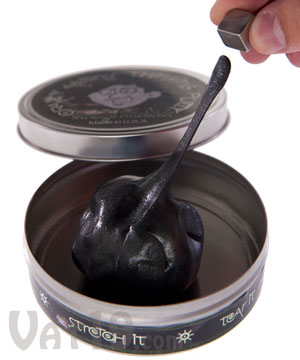Thursday, December 30, 2010
Saturday, December 25, 2010
Tuesday, December 21, 2010
Friday, December 17, 2010
Thursday, December 16, 2010
Wednesday, December 15, 2010
Sunday, December 12, 2010
Tuesday, December 07, 2010
Monday, December 06, 2010
Friday, December 03, 2010
Wednesday, December 01, 2010
Tuesday, November 30, 2010
Water Bears are cool

The
tiny creatures, known as tardigrades or water bears, are certainly
strange-looking with their eight chubby legs, little claws and probing
heads.
Some experts have compared their shape with jelly babies
or moles but tardigrades they should not be judged by their 'cute'
appearance. They are virtually indestructible - they will not die even
if they are boiled, frozen, squeezed under pressure or desiccated.
Read more: http://www.dailymail.co.uk/sciencetech/article-1054351/Tiny-water-bears-creatures-survive-space.html#ixzz16ijC93OB
Tiny water bears become first creatures to survive in space | Mail Online
Friday, November 26, 2010
Monday, November 22, 2010
Sunday, November 21, 2010
Friday, November 19, 2010
Thursday, November 18, 2010
Crazy Curse

Meet Aki Higashihara. She might look like your typical Japanese pin-up
with a blog and a smile, but she is anything but. This is the woman who
could be killing the Nintendo Wii.
In Japan, Higashihara's blog
is referred to as the "DEATH BLOG" after popular manga "Death Note". If
she blogs about something, that means it's dead. D.O.A.
•Higashihara works as a campaign girl for the Dreamcast, and then the console is defeated by the PlayStation 2.
• She works as a campaign girl for loan firm DIC. DIC goes under.
• She dates the best Judo athlete in the world, Kosei Inoue, and he only places fifth at the 2004 Olympics.
• When she attends the Kano Cup Judo World Grand Prix for the first time the following January, Inoue is injured.
• Every horse she picks in horse races loses with her record at 38 straight losses.
• In May 2007, she picked her three favorite horses to win — all three break bones.
•
Two months later, a jockey tells her to select any horse but his. In
her pre-blog days,Higashihara replies that she'll repeatedly write his
name in her notebook — then referred to as the "Death Note". Two months
later, the jockey falls off his horse and ends up with a broken rib and
punctured lung.
• Higashihara jokes that she'll write the names
of all horses in her notebook, except her favorite horse "Vodka". There
is an outbreak of equine flu later that year at the Japan Racing
Association stables, resulting in all races for that year to be cancel.
Vodka doesn't fall ill to the flu, but develops swollen ankles and
cannot race.
• In 2007, she begins appearing on horse racing show
Super Keiba. The show, in its 20th year on air, is cancelled three
months later.
• In 2008, she states she'll marry Inoue at the Imperial Hotel. A fire breaks out at the hotel.
•
After marrying Higashihara, Inoue not only loses the judo championships
but doesn't even make the Olympic team. Regardless, she attends the
Summer Olympics, and the Japanese team post its worse performance ever.
• Every K-1 kick boxing fighter she has cheered for has lost.
• In early 2008, Higashihara appears at a McDonalds. Parasites are found in the burgers the next day.
•
That same year, she appears in an ad for instant ramen. Later,
parasites are found in that company's instant noodles and insecticides
are found at the factory.
And there are countless other examples
where bad luck seems to follow Higashihara. Take her January 16 blog
entry in which she wrote about a centuries old ginko tree. Two months
later, the tree suddenly topples over.
Granted, every one of
these claims has not been thoroughly fact checked like the Madden Curse,
but Higashihara's DEATH BLOG is very much part of Japanese internet
folklore. So her recent entry is already sending shocks and doomsday
notices:
aramatheydidnt: Is "talent" Aki Higashihara cursed?
Tuesday, November 16, 2010
Monday, November 15, 2010
Friday, November 12, 2010
Thursday, November 04, 2010
Wednesday, November 03, 2010
Tuesday, November 02, 2010
Thursday, October 28, 2010
Wednesday, October 27, 2010
Saturday, October 23, 2010
Wednesday, October 20, 2010
The Burger Lab: The Myth of The 12-Year-Old McDonald's Hamburger
running at 1.21 jigawatts and have somehow ended up in an alternate
universe in which internet memes don't exist, then you may not yet have
read about the 12-year old McDonald's Hamburger
that still looks just like a McDonald's Hamburger. For the rest of you
who are already with me, you'll have to indulge me for a moment while I
fill-in the time travelers as to what's been going on.

The Burger Lab: The Myth of The 12-Year-Old McDonald's Hamburger | A Hamburger Today
Tuesday, October 19, 2010
Monday, October 18, 2010
Government aims to ban all Emulators

In a surprising move, the Australian government who are renown for their particularly stubborn stance on censorship have decided that the possibility of people playing unrated games on emulators is too great, moving to ban them as soon as possible.
An emulator in computer sciences duplicates (provides an emulation of) the functions of one system
using a different system, so that the second system behaves like (and
appears to be) the first system. This focus on exact reproduction of
external behavior is in contrast to some other forms of computer simulation, which can concern an abstract model of the system being simulated.
While the government will not say what games, if any currently pose a threat to the rating system, it is believed that the action is one of 'future proofing' against the possibility of import loopholes down the track.
And Magmarock, don't believe everything you read :)
Thursday, October 14, 2010
Wednesday, October 13, 2010
Monday, October 11, 2010
Wednesday, October 06, 2010
Tuesday, October 05, 2010
Sunday, September 26, 2010
Friday, September 24, 2010
Thursday, September 23, 2010
Wednesday, September 22, 2010
Sunday, September 19, 2010
Friday, September 17, 2010
Tuesday, September 14, 2010
Friday, September 10, 2010
Thursday, September 09, 2010
Wednesday, September 08, 2010
Friday, September 03, 2010
Wednesday, September 01, 2010
Friday, August 27, 2010
Wednesday, August 25, 2010
Monday, August 23, 2010
Friday, August 20, 2010
Paul's Extreme Sound Stretch by Nasca Octavian PAUL
Wednesday, August 18, 2010
Tuesday, August 17, 2010
Boogie 'till you Poop
Boogie 'til You Poop from Cedar Wright on Vimeo.
Thursday, August 12, 2010
Wednesday, August 11, 2010
Sunday, August 01, 2010
DI How to
REPLY FROM DaveMIX
"What does a DI do, and how should I use it?" is a question I get a lot, and at first it was hard to answer (in English, especially). And I'm too busy at a gig to explain this fully, so here is the big mother; everything I know about DI boxes for everyone to read - at their own pace.
DI BOX DEFINED
A "Direct Input" box, or "Direct Injection" box does three things at once: (1) Impedance matching, (2) impedance conversion, and (3) balancing.
Transmission of signal involves not only the input and output, but also the cable with its inherent losses. As runs become longer, the approach to reducing losses changes. In modern equipment this cable loss is managed, but if the inputs and outputs are out of range, you need a DI (or something) to address the mismatch. Were not talking volume matching (voltage, or power), but impedance matching (the amount of current required to transmit a voltage).
1) Impedance Matching
A DI box has inputs and outputs that match what they should be hooked up to. Most instruments have a high impedance output (electric guitar, 500-3000 ohms), and should be plugged into a high impedance input (guitar amp input, 2000-10000 Ohms). The mic input at a console is low impedance (400-800 Ohms) and should be feed with a low impedance source (a microphone, 20-300 Ohms).
A DI has the appropriate impedance for those connections (input greater than 10,000 ohms, output less than 300 ohms).
2) Impedance Conversion
The DI box must change the impedance. This is traditionally done with a transformer (passive) or an amplifier stage (active). Active DIs were very popular when they were introduced in the 80s.
3) Balancing
The DI box must take the unbalanced signal from a guitar and make it appear as a balanced signal at the console.
The familiar unbalanced guitar cable has a single signal or "hot" wire and a wire braided "Shield" wire which completes the circuit (current return) and distributes a "signal ground" to refer the signal. Also the grounded shield completely surrounds the hot wire and blocks out noise (RF).
A mic output has a shield, a hot (+), and a cold (-) where the cold is the exact opposite voltage as hot. This reduces wire related problems in several ways. One way is that the signal is referred between hot and cold, and the shield is not part of the audio signal but is just for isolating the hot and cold signal from noise. Equal but opposite voltages leaves a sum of zero, reducing losses, and most importantly you get all the advantages of "twisted pair".
DI INPUT TYPES
The countryman Active DI has an input impedance of 1 million ohms. Adding an active DI will, not alter this way the tone of the guitar/amp reaction. Using a DI on an instrument not hooked to an amp, will also work, but you have barely completed the circuit, and could have some tonal changes or even background noise.
Imagine you are measuring the temperature of a glass of hot water with a thermometer. If the thermometer is large, it will cool the water - the process of measuring would skew the results. Likewise an active DI will skew the sound the least - 1 million Ohms is like a small thermometer.
Transformers, meanwhile, have improved. Jenson transformers are quite good, and the new Lundahl brand of transformers is even better. You can now have less distortion and less phase error with the new transformers than you will ever get with active. The input impedance is lower than a Countryman Active, but it is well within reason with the new transformers.
Active DIs require power for the electronics. This can be from a battery, phantom power, or both. Batteries will wear out, phantom power makes a pop when engaged, and not every PA has phantom power. Also some if not all active DIs pop when turned on, which happens a lot since most active DIs turn on when plugged in. Reliability of the power, and that popping sound are the downsides I see to active DIs.
Cheaper passive DIs have lesser transformers which have an audible effect on the sound of the instrument in both the PA and the instrument amplifier.
DI OUTPUT
The passive DI has a transformer which creates a "transformer balanced" output; a great method for balancing. Active devices use amp stages to generate equal but opposite "active balanced" signals on the hot and cold output, this method and another electronic method called "servo-balanced" are also very good.
Some active DIs still have a transformer for balancing the output. Cable Factory makes a DI that is switched either passive or active, but always has transformer balanced output.
A third method of balancing an output is not as good, but fortunately is never used for DIs, because avoiding this shortcoming is what DIs are for. "Impedance balanced" outputs have an active amp for hot, a passive resistor to ground for cold, and a shield connected to ground - no longer the true definition of balanced. Most mixers, Mackie for example, have impedance-balanced outputs for XLR outs. Using a DI after the mixer would give you the improvement of a true balanced output.
GROUND AND SIGNAL GROUD ISOLATION
Before and after a DI, ground is used for a lot; grounding the shield for noise suppression, signal reference in unbalanced systems, connecting the chassis of audio gear together, and safety. The way all DIs work, the unbalanced input ground doesn't have to be connected to the output ground if a simple "ground-lift" switch is included. This allows an unbalanced signal shield to "float" while still having a signal reference.
If you connect a DI and get a hum from a "ground loop", then this ground-lift switch could be exactly what is needed. At the DI's output, the console is a main distributor of signal ground and should always be connected to the electrical earth ground. The DI chassis and output sections are always signal-grounded to the console. At the DI's input you may have a grounded system (like a bass amp) that creates a loop with the signal ground. As a rule of thumb, if the device doesn't have an electric plug with ground, then you cant have a ground loop. (do not disable a grounded outlet - if your devices were designed to have them, keep them grounded, and have a ground tester for mystery locations).
You should always hook up the DI with ground on. It's the right way and the safe way. If you have a hum, try switching it off. Sometimes the hum disappears completely, sometimes it gets louder. If it gets louder, something is wrong beyond the scope of the DI. If the hum goes away; that's what the switch is for.
Again, if it's an acoustic guitar and no amp, then you should always be grounded - you can't have get a ground loop from a battery.
SUPERFULOUS FLUFF
The manufactures make DIs with added features. Ground is required. But there is more, which I don't advise using.
Something that would destroy most DIs, would be hooking up to an amplifier output (speaker jacks) to get the tone of the amp driving a speaker. But some DIs come with that option; you must select a switch first and then hook a speaker cable into the inputs - make sure the amp is off Sparky! The Countryman Active DI does this, some like the "redbox" also had the beginnings of cabinet emulator technology also built into them. Radial makes a red DI box that does what the red box did.
Some DIs offer bass cutoff switches and EQ (such as the Sans amp DI). Having musicians set EQ for the house mix is can bring up some weird results, a better and more straightforward way is described next.
WHERE TO ADJUST WHAT
When you want to change your volume or EQ, it does make a difference where you do it. If the DI is hooked up as standard to the bass amp input, then any changes to the bass amp will not be heard in the PA, while changes to the bass guitar or the effects will be heard in the PA as well as the bass amp.
So if the adjustment is to meet the needs of changes in the music then do it on the instrument, and if you need to adjust because your perception isn't right on stage then do that at the bass amp. This is true for any instrument with an amp and standard DI connection.
POST AMP DI
If the DI is after the amp because you have a DI with the ability to be connected to the speaker jacks, then the amp adjustments will be heard in the PA. This is a downside to this configuration.
Another way is to connect to a line out of an amp. Again all amp adjustments will be heard in the PA, not good. Still I'd connect the DI there for certain situations, but do you need a DI? Read on.
NO DI, THE HARD-WIRED OPTION
Of the three jobs of a DI listed in the beginning, number three can be done for under $20. With a cable and two connectors, you can convert unbalanced to impedance-balanced but you will not have corrected for the impedance mismatch.
Connect the unbalanced hot to the balanced hot, connect unbalanced shield to balanced shield, and connect the unbalanced shield to balanced cold. You can not ground-lift. The mismatched impedance will draw too much current, perhaps causing distortion or tonal changes - but the output impedance of today's new gear is dropping, and many instruments can take the load (current draw). Not recommended to long term use, but they are handy when someone asks for more DIs than you can spare.
YOUR CASE
You could run from lineout into the mixer without using a DI. If line out is from an unbalanced 1/4" connector, then run an unbalanced cable with 1/4" connectors at both ends to your mixer. All mixers have 1/4" inputs; some are more for line level and some are more for mic or instrument level, but it will work and be fine.
Unbalanced instrument cable should not be too long, the upper limit is between 20 and 40 ft, but at line level you are okay. Balanced line level is the output mixing consoles return from a mixing board down a 300 ft snake to the amps, so unbalanced line level to your mixer can go across a stage, or even down a snake.
BRING A SPEAKER
For Rock n Roll, a DI is not enough for bass or keyboards, the musician must also have an amp and speaker cabinet. I see your Hartke B900 amp also has a speaker which is good, since otherwise you will only be in the main PA speakers. You should not expect to be in stage monitors with most PAs since bass guitar makes notes much deeper that the voice. Not only does it expose the vocalist's monitor to damage, it also reduces perceptibility for the singer.
If you're doing a small acoustic-type show, you can get away with only being in the PA and maybe a bit in the monitors. Reducing your volume will reduce how much you have to carry - but can you refuse the urge to rock?
DI RECOMMENDATIONS
I currently am buying only Cable Factory passive DIs with Lundahl transformers. The basic model, Cable Factory DI-PRO-P1, cost under $200, sounds great, and always works. I recommend it as the best overall DI. They also make an active/passive DI, the DI-PRO-AP1. They have other stuff too (they make my snakes) at CableFactory.com (1-888-383-4883), ask for Bob and tell him I sent you. They only sell direct.
Radial also makes good DIs with Jenson transformers. They make many with feature options galore, many with features not conducive to reliable use in concert in my opinion, but useful in studios for example. They make a good one for stereo laptop connections. They also make one with cabinet emulation, and a very basic top-notch. They make a few budget DIs, which I recommend against.
Countryman's "Type-85" active DI is very good sounding, and I still use them live for any instrument I want to be as pure and distortion-free as possible. They operate on both 9 volt battery and phantom power supplied for a mixing board. BSS also makes a great active DI, as well as Radial and Cable Factory.
I would avoid the cheaper DIs if at all possible. With the best DIs, it's hard to measure any error even with a very clean a quite measurement machine. With the cheaper ones it becomes easier to measure and even perceptible.
THERE IS ANOTHER WAY
A good mixing board has good balanced outputs, it also can take an unbalanced input- Hey it's a DI! Sound engineers are picky about quality so, this is a big move up. Focusrite, Neve, SSL, and other top live and studio console designers make "channel-strips" where all the features of a single channel are put in a rack-mount unit with transformer-balanced outputs. You'd get a very good preamp, very effective EQ and maybe compression or limiting. Some even let you adjust the input impedance to allow tonal variations based on the input circuit. You will lose out on the ground-lift switch, and $1000 - $3000 for the unit.
Now, that was a lot, let me know what you're thinking.
-DaveMIX
Saturday, July 31, 2010
Laksa Recipe
Serves 6, cooking Time 1 hour (plus time to prepare stock)
Ingredients - Laksa Paste:
• 20 dried large chillies soaked in warm water for a few minutes and drained
• 30 shallots peeled
• 5 large cloves of garlic peeled
• 6-8 candlenuts (alternatively, use macadamia, brazil, hazelnuts or almonds)
• 2.5 cm peeled and chopped turmeric root or 1 heaped teaspoon dried turmeric powder
• 3.5 cm peeled and chopped galangal or possibly ginger
• 5 stalks stripped and chopped lemon grass
• 3 cm cube of belancan (crushed dried shrimp paste)
Additional Soup Ingredients:
• 500 ml coconut cream (or use fresh grated coconut and water
• 1.25 litres of thin coconut milk.
• 100 gm dried anchovies (experiment with fish sauce or stock cubes if you can’t find these)
• 150 ml cooking oil
• 400 gm small raw shrimps – cleaned and de-veined
• 3 stalks of polygonum (kesum) asian mint leaves.
• 15 pieces of tofu puffs roughly chopped into 2.5 cm pieces
• 30 fish balls (from a chinese supermarket – alternatively use 300 gm shredded cooked chicken)
• 2 anchovy or fish stock cubes
• salt to taste (around 2 teaspoons)
• 400 gm bean sprouts – quickly blanched and refreshed in cold water.
• 300 gm rice vermicelli (noodles) blanched in boiling water for 2 minutes and drained
Garnish – Ingredients:
• 1 kg fresh cockles, cleaned and scalded in boiling water for 3 minutes, drained and shelled. or approx. 300 gm cooked fresh cockles or small clams.
• 1 large cucumber, peeled, seeded and sliced in very long fine strips
• 12 large red chillies pounded with a little sea salt
• 3 large red chillies sliced
• 2 stalks of de-stalked and finely shredded polygonum (kesum) leaves
Method:
1, Prepare the coconut milk, either from a packet or using fresh coconut to create a thick cream and set aside.
2. Prepare the coconut milk as well and set aside. Add the dried anchovies to 1.5 litres of water and bring to the boil, simmering for 30 minutes to reduce to 1 litre stock. Strain and set aside.
3. Blend all the paste ingredients into a smooth paste either with pestle and mortar or an electric blender.
4. Heat 2 tablespoons of cooking oil in a wok until almost smoking and add the paste (watch out for the spitting). Fry off the paste for a couple of minutes to blend the flavours.
5. Add the shrimps and fry them till they begin to turn pink.
6. Stir in the anchovy stock followed by the thin coconut milk and a bunch of whole laksa leaves. Simmer for 7 minutes, stirring regularly.
7. Add the chopped bean curd puffs, fish balls and coconut cream to the mixture, seasoning with crushed anchovy stock cubes, sugar and salt, simmering for about 5 minutes.
8. While this simmers, arrange the noodles on a platter with all the other garnish ingredients in separate bowls.
To serve, put a small portion of bean sprouts and noodles into a rice/soup bowl, sprinkle on cockles, add a small spoon of chilli paste, a few sliced chillies, threads of cucumber and shredded laksa leaves. Ladle enough of the soup on top to cover the ingredients. Serve immediately and savour.
Thursday, July 29, 2010
Wednesday, July 28, 2010
Tuesday, July 27, 2010
Friday, July 23, 2010
Thursday, July 22, 2010
Tuesday, July 20, 2010
Sunday, July 18, 2010
How Achievements Work
Achievements Unlocked
![]()
Posted July 15, 2010 by
Vince Curley (Xbox LIVE & Platform Architect) – V
What
is the happiest sound in the world? The roar of coins pouring into a
metal tray when you hit a jackpot playing slots? The final school bell
of the year, signaling the start of summer? The cheer of the crowd when
your team wins a match?
Saturday, July 17, 2010
Wednesday, July 14, 2010
Monday, July 12, 2010
We are Doomed!
blackout that the disaster unfolding in the Gulf of Mexico may be about
to reach biblical proportions.
251 million years ago a mammoth
undersea methane bubble caused massive explosions, poisoned the
atmosphere and destroyed more than 96 percent of all life on Earth. [1]
Experts agree that what is known as the Permian extinction event was the
greatest mass extinction event in the history of the world. [2]
Doomsday: How BP Gulf disaster may have triggered a world-killing event - by Terrence Aym - Helium
Sunday, July 11, 2010
Saturday, July 10, 2010
Thursday, July 08, 2010
Wednesday, July 07, 2010
Tuesday, July 06, 2010
Monday, July 05, 2010
Decoding CAPTCHA's
Decoding CAPTCHA's
Most people don’t know this but my honours thesis was about using a
computer program to read text out of web images. My theory was that if
you could get a high level of successful extraction you could use it as
another source of data which could be used to improve search engine
results. I was even quite successful in doing it, but never really
followed my experiments up.
My honours advisor Dr
Junbin Gao http://csusap.csu.edu.au/~jbgao/ had suggested the
following writing my thesis I should write some form of article on what
I had learnt. Well I finally got around to doing it. While what follows
is not exactly what I was studying it is something I wish had existed
when I started looking around.
Robotics developers at the Federal Institute of Technology in Zurich's Institute for Dynamic Systems and Control have built autonomous robots that drive, dock with their peers on the ground, then fly into the air in coordinated swarms....all of this without human direction. In fact, the vehicles can drive around on the ground as individual, autonomous units, but "it is not until they assemble that they are able to fly," according to the researchers:
Why, no, I am not one bit afraid of these swarming, flying robotic drones - Boing Boing
Sunday, July 04, 2010
Thursday, June 24, 2010
Tuesday, June 22, 2010
Sunday, June 20, 2010
Friday, June 18, 2010
Thursday, June 17, 2010
A comment on this story from a friend.. or is it?!

I Sold Everything To Buy A Lamborghini And Drive Across The Country
BlowingThisWhistle 06/12/10
sending request
Invite a friend to comment
Some truth about this story:
Richard Jordan has taken Matt Hardigree on a ride with a ton of lies here. He never sold all of his possessions or spent his "life savings" to set out on the open road or to buy the Lamborghini (OR any of the other luxury cars and bikes he's been afforded over the years).
Where to start with this pile of madness? He sold his metal fabrication business?! WHAT business? What was the name of this alleged business and to whom did he sell it and when? For that matter, WHAT JOB? And he took to the highway, living hotel to hotel after his fiancee left him???! The timeline in this is whack. He bought her a Corvette AFTER he bought the Lamborghini (and also after he bought the Hummer H1 and the Audi A4 AND the Ford F-650 AND the Cadillac and whatever else that he purchased within that five year block), and they were together for a long while afterward. What about the time he was pulled over in Indiana? Or the embarrassing time(s) he TOLD people he was Moby? The versions portrayed above of those incidents are a convoluted headache of half-truths. Witnesses were there, remember, Richard? This article leads readers to believe Mr. Jordan is some kind of nomadic Mad-Max-meets-Two-Lane-Black-Top messiah when he's really just a delusional kid who hails from extreme privilege. I'm sure his good family is floored by this hacked up mess of words.
Hell, my elderly parents have put more out-of-state miles on their car than Richard has put on this Lambo. The most driving he's done has been at 18o mph from Starbucks to Starbucks across the Dallas/Ft. Worth metroplex. This is SUCH an unbelievable crock. People can't possibly be reading this story, looking at the handful of pictures Richard took while on a few road trips along with the images of his new warehouse, and thinking all of this has no holes in it! Come on.
Richard, you owe Matt Hardigree a huge apology for wasting his time and for leading readers to believe you're some kind of reformed victim of love who left everything behind for some romantic, American dream. Did you think an article of this popular magnitude wouldn't be read by people who know you in real life? Reply
powermatic promoted this comment
Image of powermatic powermatic 06/14/10
sending request
Invite a friend to comment
@BlowingThisWhistle: First, I don't believe 90% of 'Richard's' story either (I've got a post here somewhere addressing same) but curious where you get your info-there was nothing in the above story about other cars he/they owned, etc. Do you know this guy, or.....?
And no matter what the truth is, Matt needs to ask some fucking questions when he hears a tale like this, and do some vetting to see how much-if any-is really true. Being a journalist does not mean copying a first-person tale and enthusiastically endorsing it-see today's Hennessy "Veyron-killer" press release as a for-instance of how not to be an auto news writer. Reply
Image of BlowingThisWhistle BlowingThisWhistle 06/15/10
sending request
Invite a friend to comment
@powermatic: I know Richard very well and have for a long time. I wrote the editor-in-chief as well as Matt Hardigree, but have heard no reply as of yet. I asked they put a plug on this story because I have seen people requesting to set up a donation fund to get Richard's Lamborghini running again. If they only knew he is a trust fund recipient, I think that might stop them from wanting to give him financial assistance. There's nothing wrong with money, but I think there's an ethical issue here Jalopnik might be ignoring at this point. There seems to be a certain solicitation of pity and support for someone who is, in reality, totally NOT the person reflected in the article. And, yes, that is questionable when at this point facts have been presented which could easily be checked for authenticity.
The article is almost 100% untrue











































